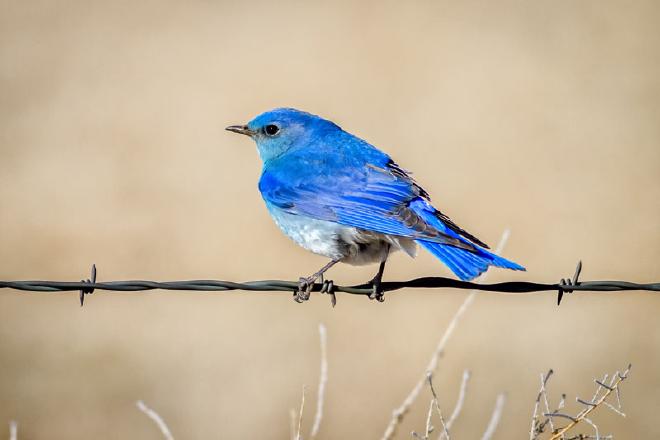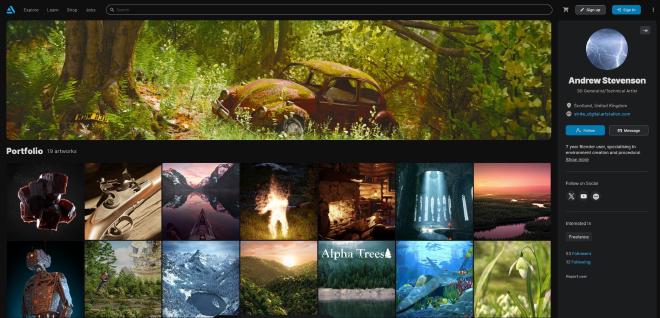Whether you’re a freelancer looking to get more clients or a creative looking to increase your chances of getting hired, creating a professional online presence is one of the most effective ways to succeed. However, while the internet gives you the opportunity to reach more people than ever before, it gives that same opportunity to employers and clients. The real challenge is creating a presence that can attract people and make them want to work with you, rather than blending in to the sea of similar profiles. Furthermore, with all the different websites, tools and social media platforms available to us, it can be easy to get overwhelmed. This article will outline some of the best routes to being successful online, hopefully demystifying the process and allowing you to continue to succeed in your professional life.
Where to start#
One of the most daunting questions to answer is simply where to focus your efforts. Should you make your own website, upload all your 3d models to Sketchfab, put your artworks on ArtStation, make viral shorts on TikTok, look like a professional on LinkedIn, or argue on Twitter? Generally, apart from the last one, and depending on your target audience, the answer is all of them.
ArtStation#
ArtStation is a portfolio website where you can post and collate your artwork into a neat portfolio that can be easily viewed by a potential employer. It is a must-have for artists, whether you’re a freelancer or are looking for full-time employment, as it is pretty much the default site for finding artists and viewing their work. Here are some useful tips for creating an engaging portfolio on ArtStation:
- Create custom featured images: When creating a new post, you can choose the square thumbnail that will be used as the cover for this artwork. By default, ArtStation will use the first image you upload, but often this will be cropped.
- Go beyond the minimum: According to ArtStation themselves, posts made up of multiple images are 54% more popular than those containing just one. Expanding on this, don’t just post your final beauty shots, also post render passes, sketches, topology, breakdowns, and tutorials. What’s often more interesting than the final product is how it was made, and showing the process demonstrates to a recruiter that you know your stuff.
- Only show your best work: It’s sometimes tempting to post everything from your latest masterpiece to your scribbles you made when you were 11. However, a potential employer looking through your portfolio won’t care about your progression; they want to see what you can do now. Even though it might seem counter-intuitive, posting your best work alongside pieces that are no longer at your standard lowers the perceived quality of the whole portfolio.
LinkedIn#

LinkedIn is a great place to make professional connections and advertise yourself professionally. One of the things that makes LinkedIn unique from other platforms is that while you can make connections purely online, the best way is actually just to talk to people in person. Here, going to professional events like animation conferences, clubs, and meetings are great ways to get talking to others in your area, and the phrase “Let’s connect on LinkedIn” flows freely like water. The obvious caveat to this is that some social skills are required, something that animators are not necessarily renowned for. If you can get past that, though, LinkedIn is a good centre for your online presence.
Twitter#

Despite its reputation, and its owner’s attempts to drive it into the ground, Twitter is still one of the best places to connect with a large audience. As such, it better suited to freelancers looking to be more visible to clients, rather than those looking for full-time employment. Twitter is very different from other websites in this list in that it is a social media first, and a professional tool second. As such, while on LinkedIn, it might pay to only post polished work and your professional achievements, on Twitter it pays to post more often and less formally. Posting consistently is especially important; The more often people that see your name on their timeline, and associate it with your work, the more likely you’ll be at the top of the list when they’re thinking about whom to approach to work on their next project. As such, try to post regularly, be that a finished project, a work in progress, tips, and tricks or even just how you feel about whatever you’re working on.
Others#
Some other platforms of interest:
- GitHub: If you do any coding, this is a must-have, and if you’re applying for a job involving programming, your GitHub profile will be one of the first place a potential employer will look. As such, make sure to push a few meaningless commits every day, so you can keep that grid green. This will let your potential employer know that you’re a professional.
- Instagram: Succeeding as an artist on Instagram is difficult, but definitely possible. It has a lot of similarities with Twitter, but without a lot of the discovery tools that make it easier to build a following. As such, it can be easier to build an initial following on other platforms and then promote your Instagram there to give yourself a head start.
- Youtube: This is a great place to upload your demo reel, but if you’re willing to put some time into tutorials or showcases, it can also be a great place to build an audience. This takes significant time investment, though, and is most beneficial to freelancers.
Conclusion#
There’s a lot to learn about promoting yourself online, but if executed correctly, it can greatly increase your chances of getting jobs.
In conclusion, a good online presence is essential if you want to be outstanding in your field.


